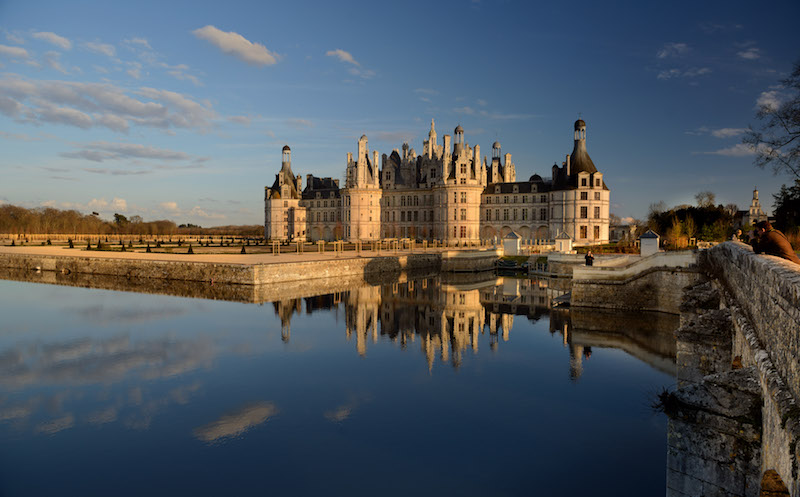To mark the 500th anniversary of the death of Leonardo da Vinci, Musement examines the life and work of the Italian artist during his time in the Loire Valley.
At the invitation of King Francis I, Leonardo da Vinci crossed the Alps and settled in Amboise, a town in the Loire Valley. Five hundred years after his death, the castle of Clos-Lucé, where the artist spent the last three years of his life, still keeps the magic of this esteemed Tuscan genius alive.
The Loire Valley is to France what Florence is to Italy: the cradle of the Renaissance. And if the Loire Valley and its castles seem synonymous with the French Renaissance, it’s partly thanks to Leonardo. He, like many other Italian artists and architects, was invited by Francis I, also called the ”Prince of the Renaissance”.
Here’s a look into Leonardo’s life in the Loire Valley to discover how he contributed to the French Renaissance.
1. Château Clos-Lucé, Leonardo’s last home
Francis I, an admirer of Leonardo, invited him to Amboise and offered him the title “King’s First Painter, Architect, and Engineer.” The Tuscan artist thus left Italy in 1516 to join France and settle in Cloux castle, known today as Château Clos-Lucé, located less than a quarter-mile from Chateau Royal d’Amboise where the monarch held court. Leonardo spent three years in Amboise before his death in 1519. It’s believed that apart from his birthplace in Italy, Clos-Lucé was his only home.

2. A peaceful retreat
“Here, Leonardo, you will be free to dream, think, and work” — the 22-year-old king welcomed the artist, his elder, whom he called, “my father.” At Amboise, Leonardo devoted himself mainly to civil engineering and his research, particularly in anatomy and botany. He perfected his drawings and paintings, but he was also in charge of organizing feasts for the royal court. This period of his life was not his most artistically productive. On one hand, he was certainly curious and liked to experiment, but he was rarely satisfied with the results and thus followed through only just a few projects to the end. On the other hand, he was over 60 when he arrived in 1516, which was considered old for that period. He also suffered from partial paralysis of his right hand. Moreover, it’s said that he often succumbed to procrastination. However, if Francis I invited him to France, it was above all to offer a peaceful retreat to this genius who fascinated him, as well as to be able to appreciate his vast knowledge by working with him daily.

3. How the Mona Lisa wound up in France
Many Italians can’t grasp why some of Leonardo da Vinci’s greatest works are on display in the Louvre Museum instead of Italy. Leonardo didn’t arrive at Amboise empty-handed but rather armed with a suitcase of notebooks and some of his most precious paintings. So, in 1516, “The Mona Lisa”, “The Virgin and Child with St. Anne”, and “St. John the Baptist” all crossed the border with him. Rumor has it that after his death, these paintings were sold to Francis I by Gian Giacomo Caprotti, known as Salai, disciple and model (and perhaps lover) of Leonardo, to whom the artist entrusted his works.
4. Leonardo da Vinci, the architect of the Château de Chambord?
2019 marks not only marks the quincentennial of Leonardo’s death but also that of the Château de Chambord. Built upon the request of Francis I, this estate is a true emblem of the Loire Valley and France as a whole. If no architect is officially recognized for the design of this remarkable Renaissance architectural work, Leonardo’s influence is noticeable. The interior composition of the towers, a Greek cross-shaped center design in which its famous double-revolution staircase unwinds, is one of the most striking clues. Indeed, several of Leonardo’s drawings were found in his notebooks that could have served as inspiration for the staircase and Chambord’scenter, already then in vogue and frequently found in Italy.

5. Dive deeper
As part of the 2019 celebrations, the Loire Valley will host events organized around the theme of the French Renaissance and Leonardo da Vinci’s legacy throughout the year. Among the many scheduled initiatives, we’d like to highlight three temporary exhibitions: “Chambord from 1519 to 2019: Utopia at Work” through September 1, “The Death of Leonardo da Vinci: The Construction of a Myth” in Amboise through September 2, and “The Last Supper of Leonardo da Vinci for Francis I, a Gold and Silk Masterpiece” at Château Clos-Lucé through September 8. For the first time since the 16th century, the tapestry commissioned by Francis I depicting the “Last Supper” — the iconic mural on display inside the convent of Santa Maria delle Grazie in Milan, where Leonardo spent the most formative years of his career, will be exhibited outside Italy, on loan from the Vatican Museums.
